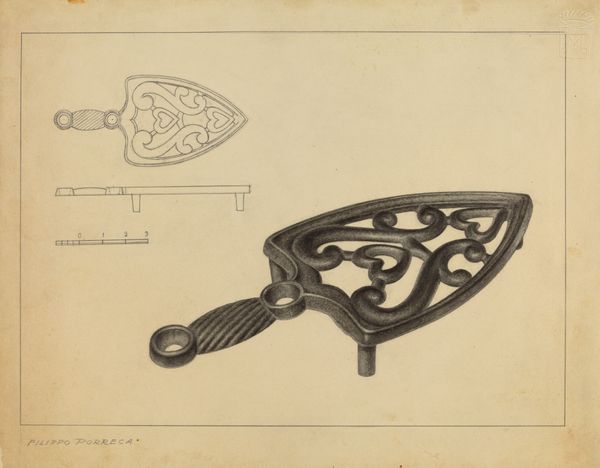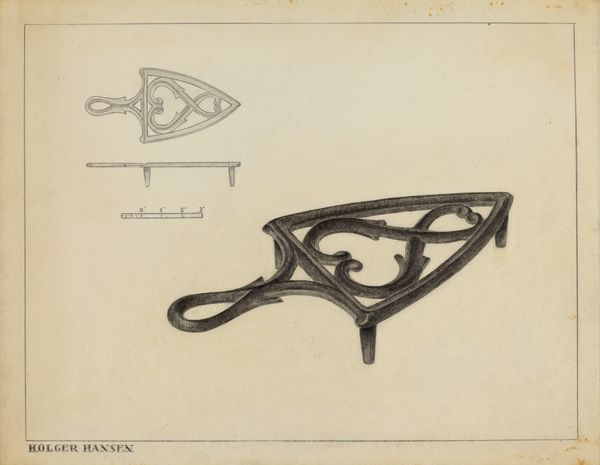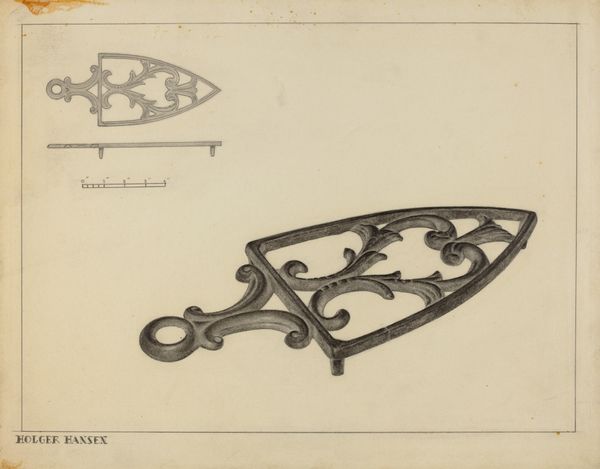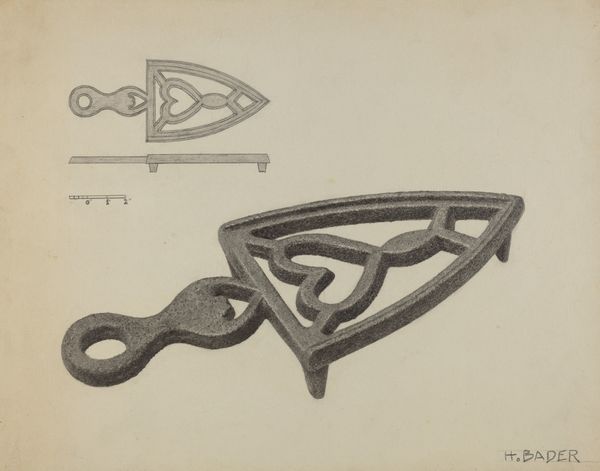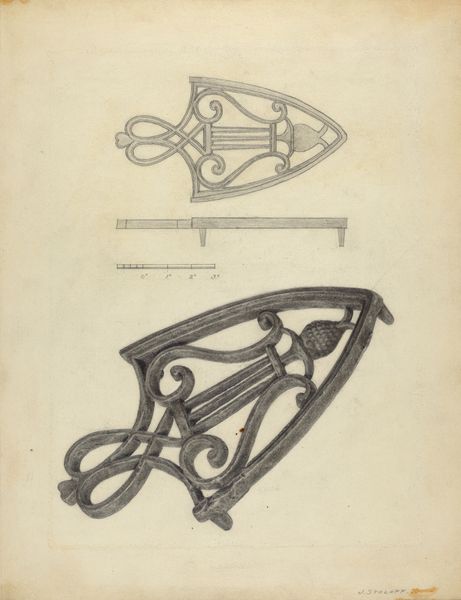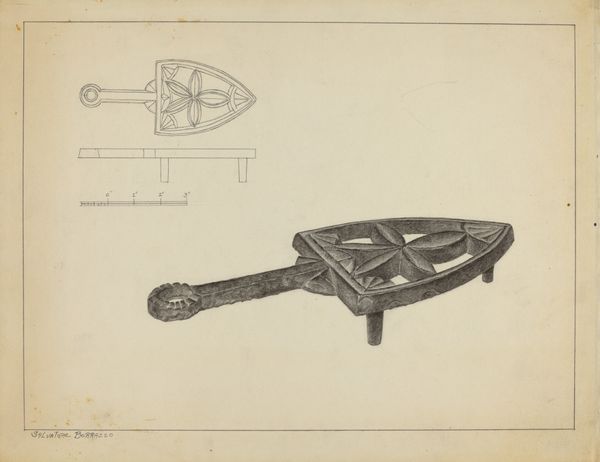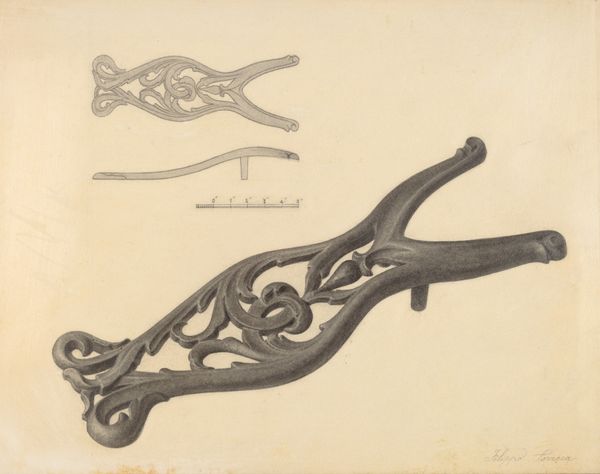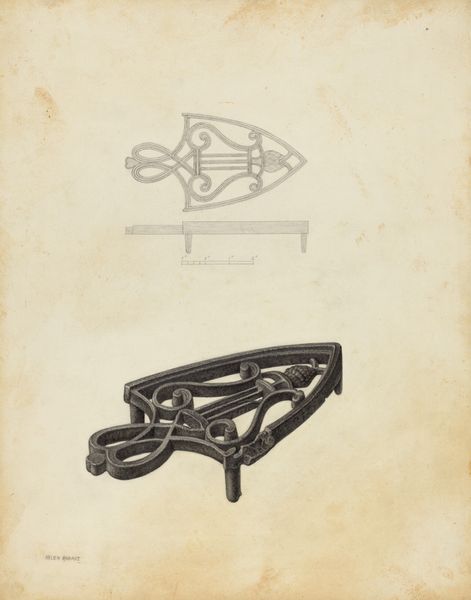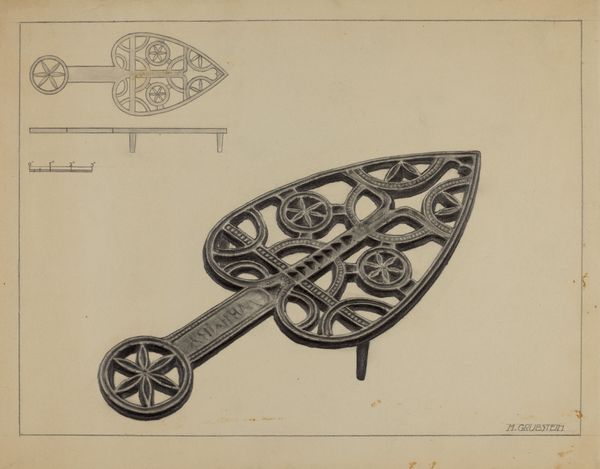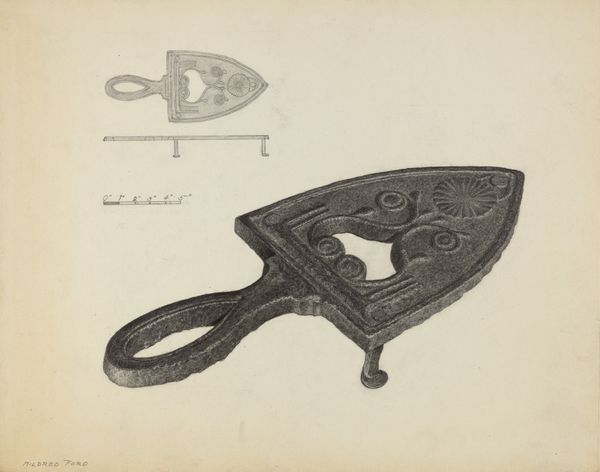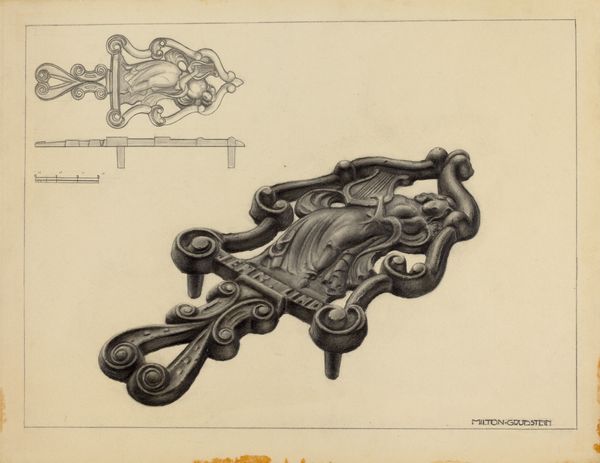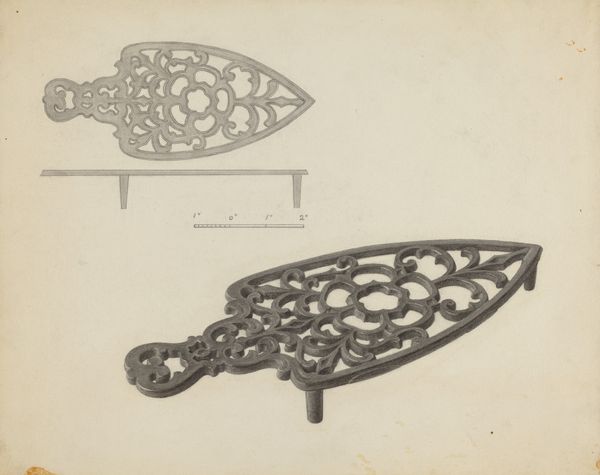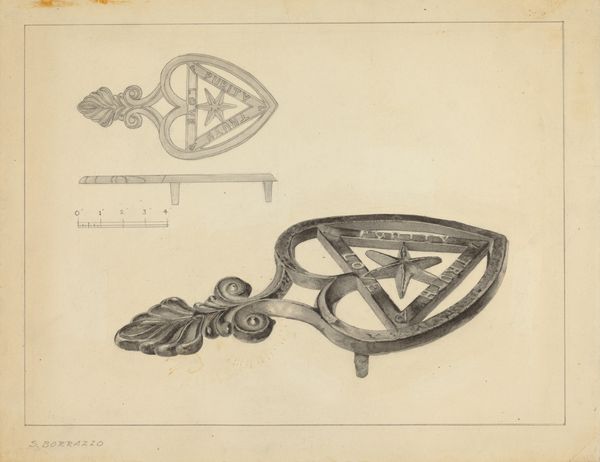
drawing, pencil
#
drawing
#
pencil
Dimensions: overall: 22.6 x 29 cm (8 7/8 x 11 7/16 in.) Original IAD Object: 7 7/8" long; 1" high
Copyright: National Gallery of Art: CC0 1.0
Curator: Here we have a pencil drawing entitled "Pa. German Flat-iron Holder" created around 1938 by Jack Staloff. What are your first thoughts? Editor: It strikes me as remarkably utilitarian yet visually complex. The interlacing designs cut into the iron suggest more than pure functionality; there's a deliberate aesthetic at play. Curator: Precisely. We need to remember that flat-iron holders were crucial tools, particularly for women who would have invested time and care into their garments. To decorate even something as seemingly basic suggests resistance to capitalist production; a desire to inscribe beauty even in daily labour. Editor: I find those circular and heart-shaped cutouts compelling. The circle, a symbol of eternity and wholeness, interplaying with the heart, typically associated with love, care, and domesticity. It makes a simple household object become laden with symbolic weight. Curator: Exactly, consider this within a broader cultural narrative, during a period marked by economic hardship and gendered labor expectations. The choice of these designs may represent quiet assertions of identity and meaning within domestic confines, critiquing societal pressure to erase personal expression in favour of uniformity and production. Editor: The drawing's exacting detail hints at its function as a record. Perhaps a craftsman’s pattern, or even an early cataloguing effort. Did these specific motifs appear with any regularity, or would such design work represent a personalized intervention? Curator: Good question. Research suggests these Pennsylvania German motifs reflected both regional aesthetic values and evolving socio-economic conditions, speaking to a unique hybrid of resistance, accommodation and preservation of culture. Editor: Examining the piece with these perspectives really enriches it. What seemed like a simple design unveils layers of personal, cultural and artistic expression. Curator: Indeed. By understanding art through socio-political lenses, and by uncovering cultural symbols, we find shared stories connecting the present with past lifeways and their continuing importance today. Editor: It also makes me more aware of the object's original purpose, connecting material and intangible elements; seeing not only what it *was* for, but also what it *meant*.
Comments
No comments
Be the first to comment and join the conversation on the ultimate creative platform.
